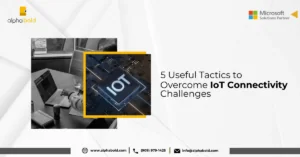Table of Contents
Introduction
Construction projects are high-risk, deadline-driven, and increasingly complex. Delays, safety incidents, and limited asset visibility can quickly impact costs and timelines. This is where IoT in construction is creating a real impact. By combining smart sensors, connected equipment, and real-time analytics, construction IoT helps firms reduce risk, improve productivity, and make faster, data-driven decisions. It’s a shift from reactive site management to proactive control.
With the market for IoT in construction projected to grow at over 14% CAGR, demand is rising for automation, intelligent asset tracking, and predictive maintenance. This blog explores the key benefits and practical use cases showing how industry leaders are turning IoT into a strategic advantage.
What is IoT in Construction?
In construction, IoT refers to a network of connected devices, software, and sensors that collect, analyze, and share data in real-time. These technologies support equipment monitoring, asset tracking, worker safety, and overall site productivity. As construction sites become more complex, integrating IoT with cloud computing, artificial intelligence, and big data analytics makes operations smarter and more efficient.
A construction IoT setup typically includes:
- Smart Sensors: For monitoring equipment, environmental conditions, and worker well-being.
- Connected Machinery: Enables real-time equipment tracking and predictive maintenance.
- Wearable Technology: Supports health and safety monitoring for workers.
- Drones & Robotics: Used for automated surveying, inspection, and site mapping.
- Cloud-Based Platforms: Centralize and analyze data to generate actionable insights.
Key Benefits of IoT in Construction
1. Enhanced Safety & Worker Protection:
Construction sites are risky, but IoT systems cut danger by improving monitoring and safety compliance. Smart gear like helmets, GPS-enabled vests, and biometric wearables track worker location and health in real-time, flagging fatigue or emergencies early. Environmental sensors add another layer of safety by monitoring temperature, air quality, noise levels to keep worksite conditions safe.
2. Real-Time Equipment Monitoring & Predictive Maintenance:
3. Optimized Resource Management:
Construction projects involve a massive amount of assets like raw materials, tools, and machinery. The use of IoT-enabled radio frequency ID and GPS tracking devices ensures better asset management and reduced theft and waste of materials. Smart replenishment inventory systems and stock management ensure maintenance of workflow.
4. Increased Productivity & Efficiency:
5. Improved Site Management & Remote Monitoring:
Make IoT Work for Your Construction Sites
Description: Learn how to build a smarter, more efficient site with tailored solutions. Speak to a AlphaBOLD consultant to map out the best use cases for your team.
Talk to an ExpertPractical Use Cases of IoT in Construction
- Smart Wearables for Worker Safety: Smart vests, as well as AR helmets that integrate IoT features, are being adopted by companies to foster worker safety. Apart from enabling instantaneous emergency communication, these devices also measure vitals and identify dangerous surroundings.
- Predictive Maintenance with IoT Sensors: Construction firms leverage sensors on construction vehicles and heavy equipment to track productivity and prevent problems. Maintenance costs are lowered, and equipment lifetime is increased through predictive analytics.
- Drones for Site Inspection & Mapping: Manual surveying sites for mapping, progress tracking, and safety assessments is time-consuming and inefficient. Drones with high-resolution cameras and LiDAR automate this work and reduce project planning timelines.
- Smart Concrete & Structural Health Monitoring: Embedded sensors—such as smart rebar and concrete monitoring systems—add IoT capabilities by measuring temperature, curing progress, and structural integrity. These insights help ensure long-term durability and safety, especially in large-scale infrastructure projects.
- Real-Time Asset & Inventory Tracking: Assets, tools, and materials from construction sites are prone to theft. IoT-based solutions where RFID tagging and GPS tech mark construction equipment is now available for efficient tracking. This improves security, prevents theft, and reduces losses.
You may also like: 4 Sectors That Benefit from IoT Development in 2025
Conclusion
The application of IoT in construction assists in improving safety and efficiency and reducing costs, which is a game-changer for the industry. Your firm can enhance processes and productivity with remote monitoring, automation, and predictive maintenance.
With the increase in digitalization, adopting IoT solutions is a necessity rather than a choice. IoT technology can protect worksites, improve resource allocation, and improve decision-making. These connected environments will make construction more efficient and sustainable by optimizing data and resource use.
Would you like to discover how they can be integrated into your construction work? Contact us today to discuss how operational efficiency can be achieved through connected devices.
Explore What Connected Devices Can Do for Your Projects
Whether you're looking to optimize resource tracking or implement predictive maintenance, we'll help you design an approach that aligns with your goals.
Talk to an Expert





